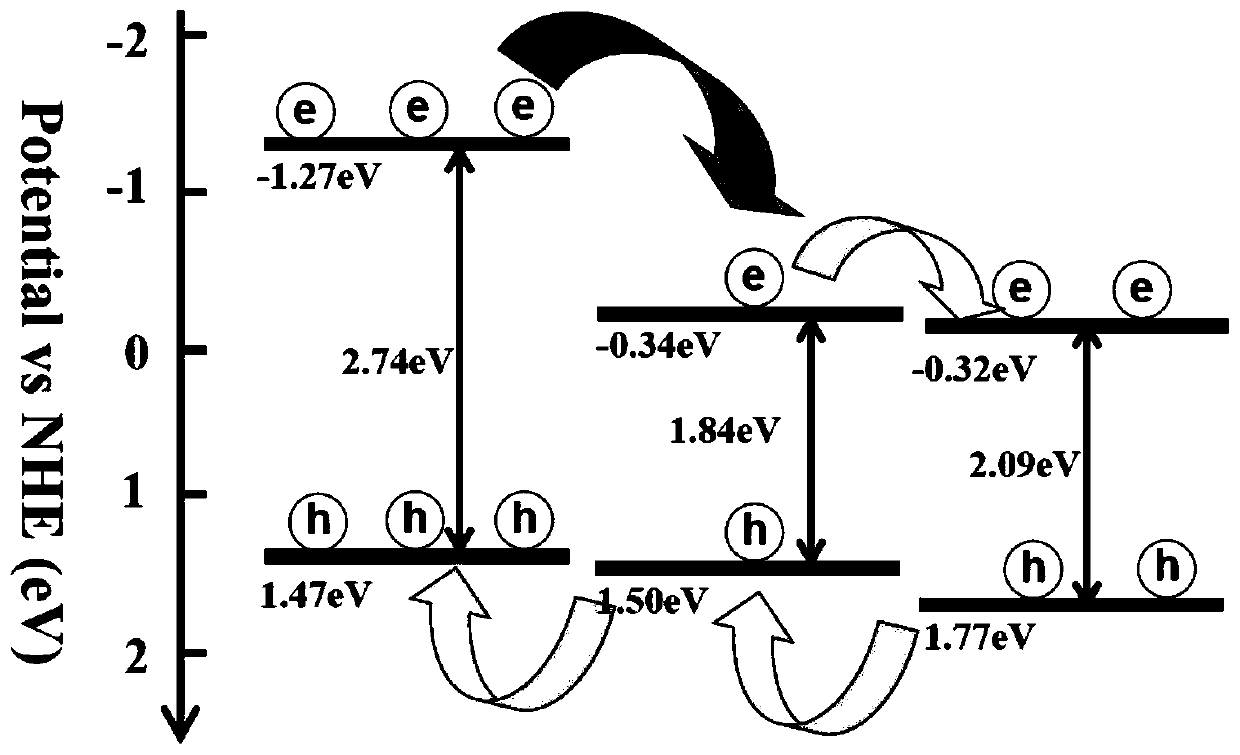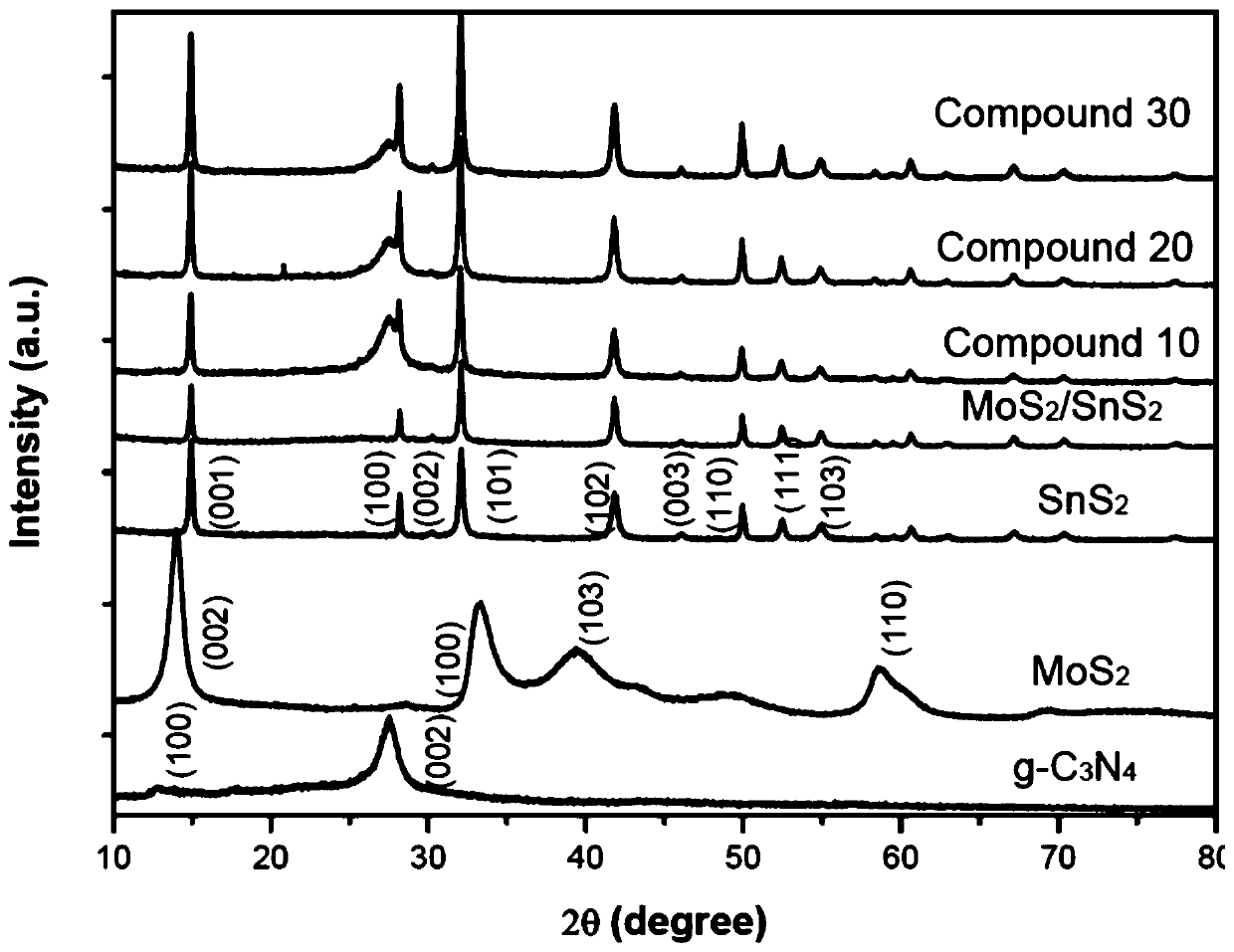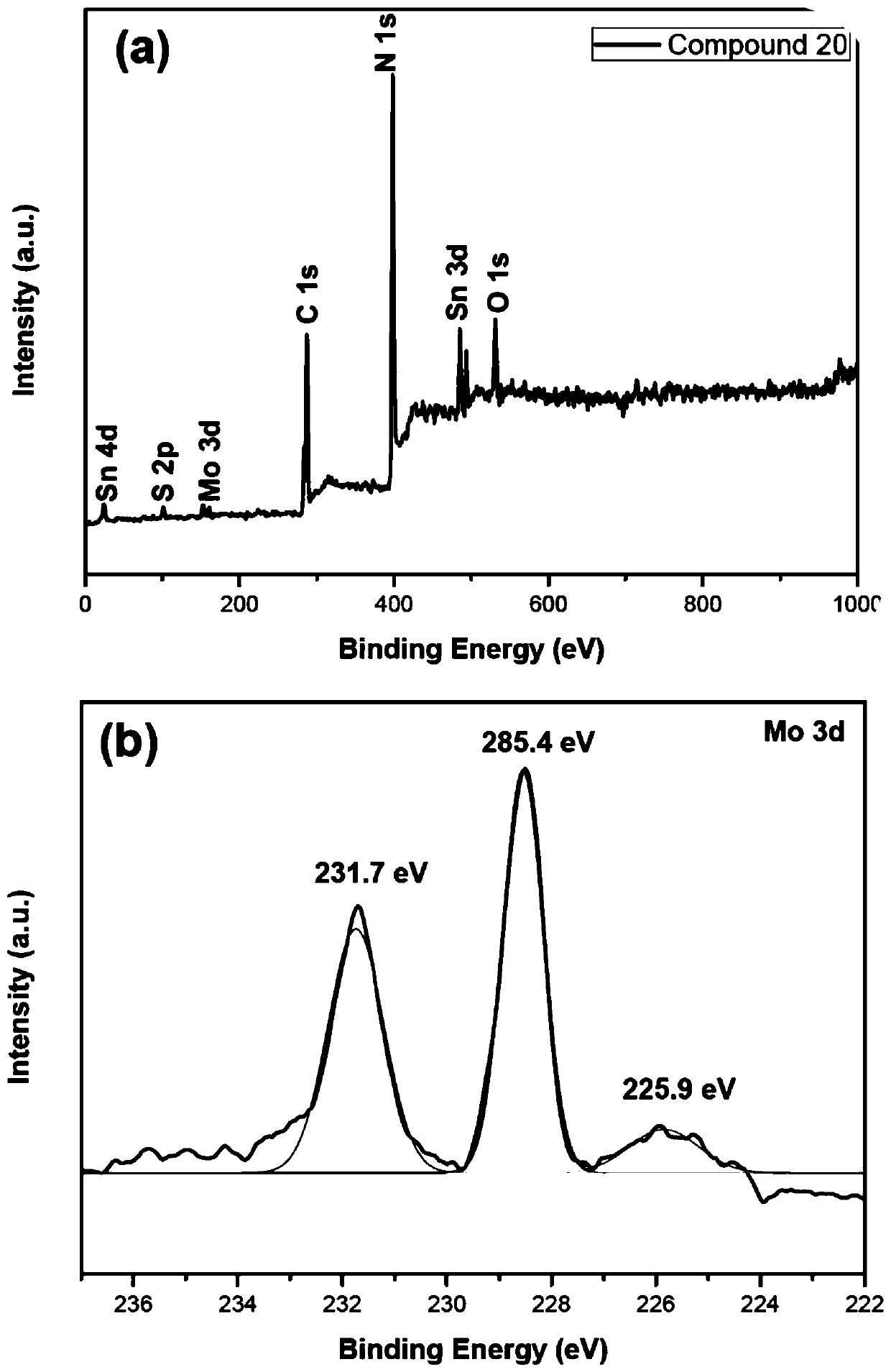Full two-dimensional ternary compound g-C3N4/MoS2/SnS2 visible light response photo-catalyst and preparation method
A ternary compound and photocatalyst technology, which is applied in the direction of physical/chemical process catalysts, chemical instruments and methods, chemical/physical processes, etc. and other issues to achieve the effect of promoting separation, good development prospects, and increasing absorption
- Summary
- Abstract
- Description
- Claims
- Application Information
AI Technical Summary
Problems solved by technology
Method used
Image
Examples
Embodiment 1
[0027] The synthesis process of the present embodiment is as follows:
[0028] (1)MoS 2 nanosheet synthesis
[0029] 1.5mmol sodium molybdate hydrate (Na 2 MoO 4 .2H 2 O), 10mmol thioacetamide (C 2 h 5 NS), 1.5mmol hydrated silicotungstic acid (H 4 [SiO 4 (W 3 o 10 ) 4 ].xH 2 O) Samples were dissolved in 80 mL of deionized water and magnetically stirred for 2 hours. Transfer the completely dissolved solution to a reaction kettle and heat it to 230°C for 24 hours and then cool it down to room temperature naturally. The reaction product is centrifugally dispersed and washed several times with deionized water and ethanol to obtain a black precursor, which is dried at 70°C to obtain MoS 2 Nanosheets.
[0030] (2)MoS 2 / SnS 2 Composite nanosheet synthesis
[0031] The prepared MoS 2 Dissolve in 90mL deionized water, then add 1mmol tin chloride hydrate (SnCl 4 .5H 2 O) and 5mmol citric acid (C 6 h 8 o 7 ), placed for 1 hour, then added 7.89mmol thiourea and ma...
Embodiment 2
[0037] In the preparation process of this example, the MoS 2 / SnS 2 Composite nanosheets and sheet-like g-C 3 N 4 The product compounded according to the mass ratio of 2:8 is marked as Compound20, and the other embodiments are the same as in Example 1.
Embodiment 3
[0039] In the preparation process of this example, the MoS 2 / SnS 2 Composite nanosheets and sheet-like g-C 3 N 4 The product compounded according to the mass ratio of 3:7 is marked as Compound30, and other embodiments are the same as in Example 1.
[0040] The most important basis for the improvement of the visible light photocatalytic performance of the above three materials through composite modification is based on the matching relationship between the band gaps of the three materials. The electrode potential values of the valence band and the conduction band of the three materials are obtained through the band gap values extracted from the UPS spectrum and absorption spectrum of XPS, as figure 1 shown. It can be seen that g-C 3 N 4 、MoS 2 and SnS 2 The potential values of the conduction band and valence band of the three materials rise sequentially to form an interlaced energy level structure, which makes the photogenerated electrons and holes flow to the Sn...
PUM
 Login to View More
Login to View More Abstract
Description
Claims
Application Information
 Login to View More
Login to View More - R&D
- Intellectual Property
- Life Sciences
- Materials
- Tech Scout
- Unparalleled Data Quality
- Higher Quality Content
- 60% Fewer Hallucinations
Browse by: Latest US Patents, China's latest patents, Technical Efficacy Thesaurus, Application Domain, Technology Topic, Popular Technical Reports.
© 2025 PatSnap. All rights reserved.Legal|Privacy policy|Modern Slavery Act Transparency Statement|Sitemap|About US| Contact US: help@patsnap.com



